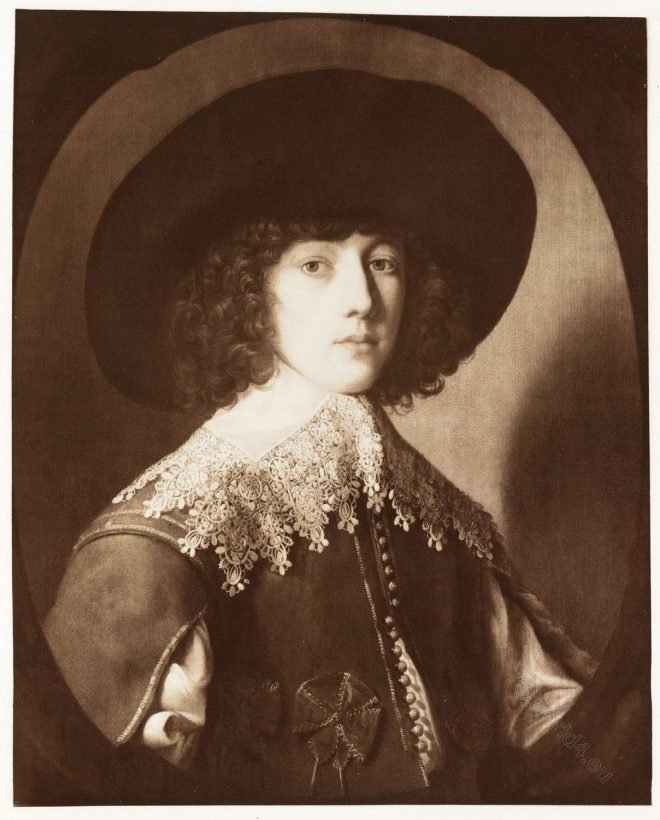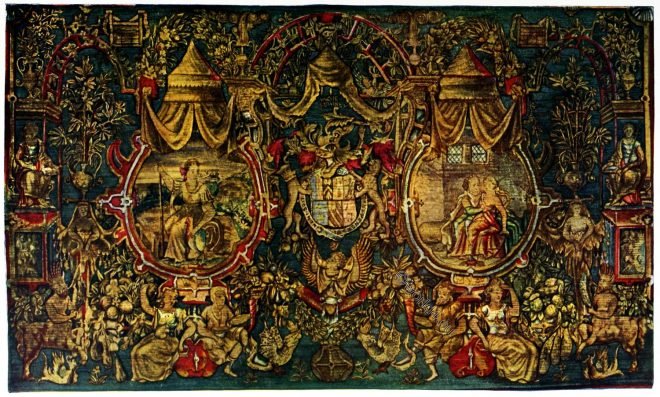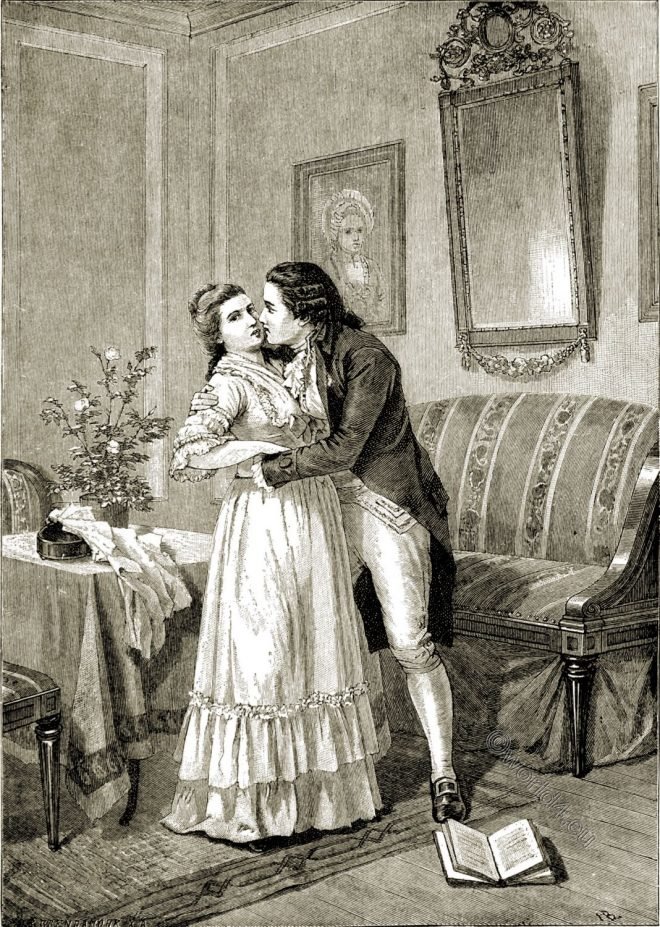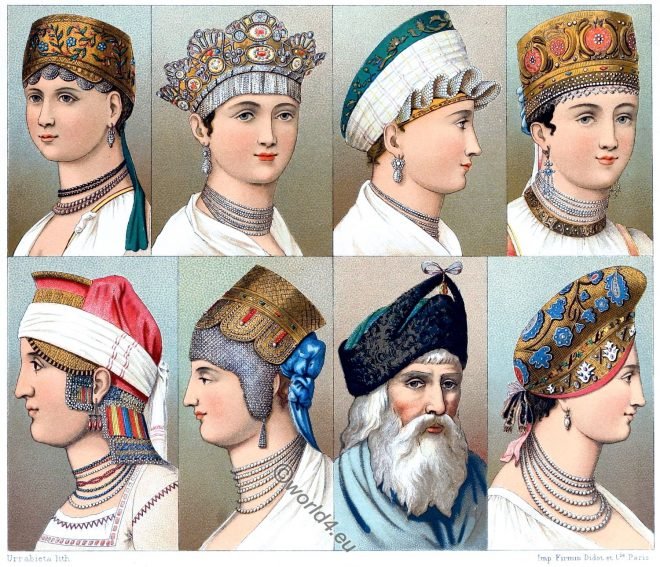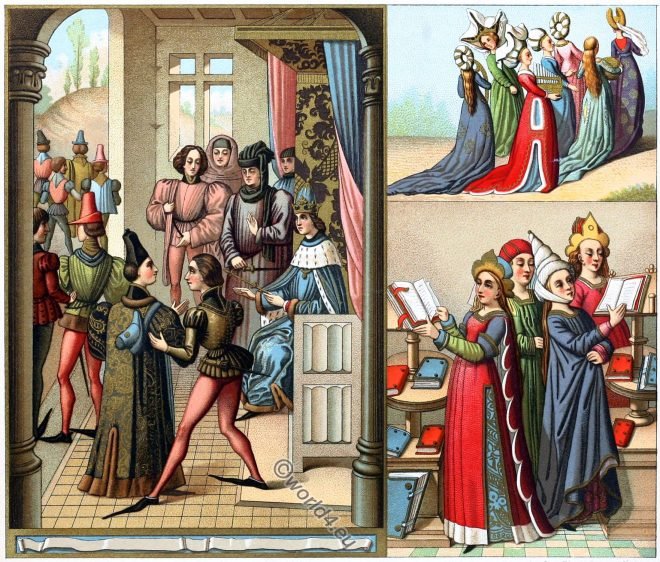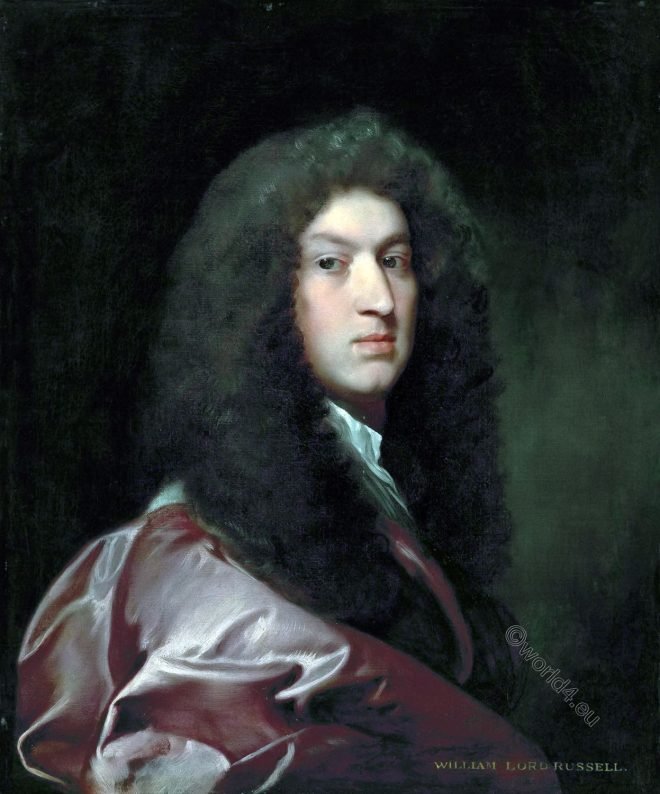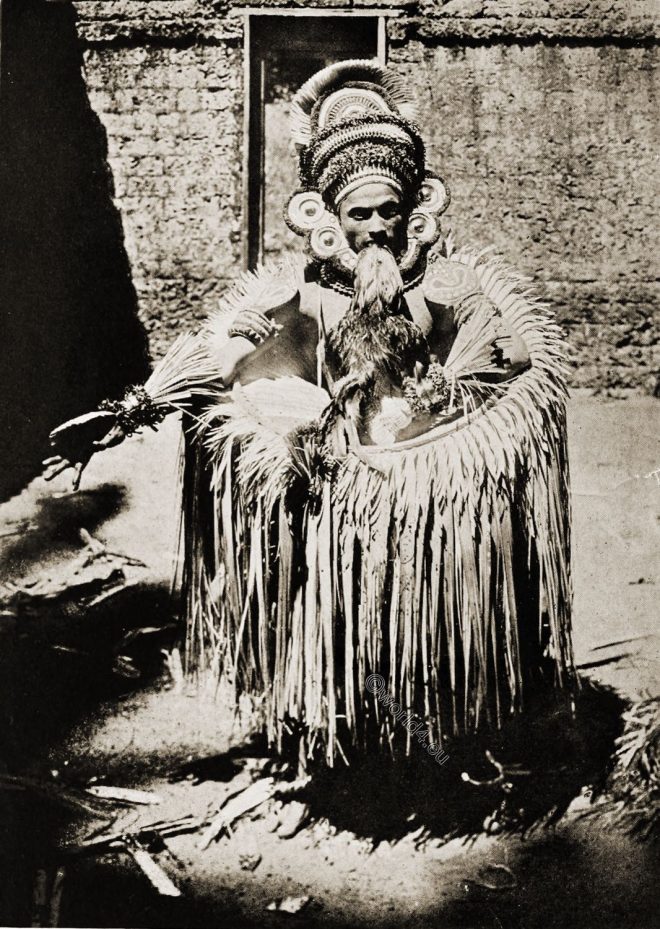Prince Rupert of the Rhine (1619 – 1682), called Rupert the Cavalier, was Prince of the Palatinate from the house of the Wittelsbacher
The “Pembroke” tapestry. Tapestry weaving in England. Tudor 16th c.
The “Pembroke” tapestry at V&A Museum, contains the armorial bearings of Sir William Herbert, 1st Earl of Pembroke in the style known as “grotesque”.
Werther and Charlotte. Goethe, The Sorrows of Young Werther (1774).
The suffering of the young Werther is regarded as the key novel of the Sturm and Drang (literally “storm and drive”). It developed into “the first bestseller of German literature”.
The Kokoshnik. Traditional Russian hairstyles and headgear.
Russia. Popular hairstyles. The traditional costume of Russian women especially the Kokoshnik (Russian: Коко́шник) has survived all innovations of fashion.
Greece. Women after the figures from Tanagra and Asia Minor.
The small terracotta figures from Tanagra almost without exception represent noble women who corresponded to the ideal of beauty and the fashion of that time.
Directoire costume of the Executive Board.
Members of the Executive Directory are accorded full military honours.
Greco-Roman Antiquities. Pompeian style. Decorative Architecture.
THE purely decorative architecture, which we find represented on the inner walls of the apartments in Herculaneum and Pompeii, seems to belong less to the domain of reality than to that of fancy.
A princely gathering. Middle Ages France 14th and 15th century.
A doctor of rights. Women’s costumes. A princely gathering. At that time, people looked less at wealth than at the number of costumes.
The execution of the English politician Lord William Russell 1683.
Lord Russell, usually called Lord William Russell, son of William, Earl of Bedford, and Lady Ann Carr, daughter of Carr, Earl of Somerset.
Omens and superstitions of southern India. Magic and Magicians.
Omens and superstitions of southern India by Edgar Thurston. Magic and Magicians. Exorcists and devil – dancers. The practice of magic.

